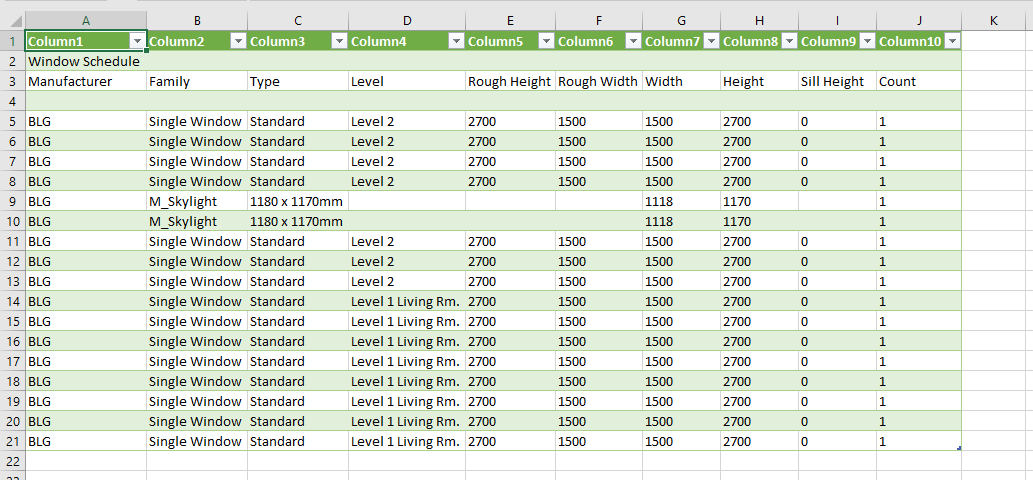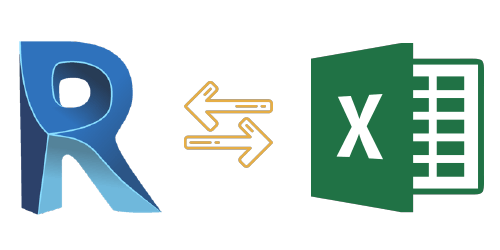Unlocking New Capabilities: Boost Revit Tools with the Right Plugins
Wiki Article
Revit Excel Integration Demystified: Enhancing Process for Enhanced Job Control
Are you tired of battling with ineffective project sychronisation and taxing process? Look no even more, since Revit Excel Assimilation is here to demystify the procedure and simplify your projects. With this powerful tool, you can boost project coordination and get rid of the hassle of manual data entrance. In this post, we will certainly guide you through the significance of Revit Excel Assimilation, reveal you just how to streamline workflows, and offer finest techniques for successful combination. Obtain all set to change your project coordination with simplicity.The Importance of Revit Excel Assimilation
You need to comprehend the relevance of Revit Excel integration to successfully simplify your workflows and improve task control. The integration of Revit, a powerful structure details modeling (BIM) software, with Excel, a commonly utilized spread sheet program, gives various advantages for engineers, engineers, and construction experts.

By incorporating Revit with Excel, you can remove hand-operated information entry and reduce the risk of errors. This not just conserves time however also makes sure precision in your task documents. You can upgrade information in Excel, and it will immediately upgrade in Revit, maintaining uniformity throughout your task.
Moreover, Revit Excel assimilation boosts task control by making it possible for reliable partnership among employee. With data integrated in between Revit and Excel, everybody can access the most current details and collaborate effortlessly. This promotes smoother communication, lowers disputes, and enhances total task performance.
Exactly How to Improve Workflows With Revit Excel Integration
Maximize your procedure by perfectly connecting Revit and Excel to simplify your workflow. By integrating these 2 powerful devices, you can improve project control and enhance efficiency in your job. With Revit Excel integration, you can easily transfer information in between the two platforms, permitting smooth interaction and partnership.

Another benefit of Revit Excel combination is the capacity to create personalized reports and evaluate information a lot more properly. With Excel's robust features, you can carry out innovative estimations, develop graphes and graphs, and produce extensive reports based on the information from your Revit versions. This permits you to make and acquire useful understandings educated choices throughout the project.
Enhancing Task Sychronisation With Revit Excel Integration
By effortlessly linking your style software program with powerful information evaluation tools, you can greatly improve the control of your projects. Revit Excel assimilation allows you to enhance your operations and improve project coordination by eliminating hand-operated information access and reducing mistakes. With this assimilation, you can easily move data between Revit and Excel, making certain that all project info is up to day and accurate.Among the essential advantages of Revit Excel assimilation is the ability to import and export information between the two software program seamlessly. This indicates that you can quickly import existing job information from Excel right into Revit, conserving you effort and time in re-entering info. In a similar way, you can export project data from Revit visit this page to Excel, enabling you to perform sophisticated analysis and calculations using the powerful attributes of Excel.
In Addition, Revit Excel assimilation allows you to develop vibrant links in between both software application (revit plugins). This means that any kind of adjustments made in Revit will immediately upgrade in Excel, and the other way around. This guarantees that all project stakeholders are collaborating with the most current info, improving task sychronisation and reducing the threat of errors
Conquering Difficulties in Revit Excel Assimilation
When getting over challenges in the assimilation check over here of Revit and Excel, it is very important to ensure seamless information transfer and reduce mistakes. One common obstacle is the compatibility of data styles between Revit and Excel. To tackle this, you can utilize plugins or add-ins that facilitate the conversion of data from one style to another. These tools aid maintain the stability of the data during the transfer procedure.One more obstacle is the lack of synchronization between Revit and Excel. It's vital to establish a clear process that makes sure both systems are updated in real-time. This can be achieved by utilizing cloud-based cooperation tools or establishing a system for routine information syncing.
Managing large datasets can also be troublesome. Revit and Excel have various abilities when it involves handling large amounts of data. To overcome this obstacle, you can divide the information right into smaller sized, convenient portions or make use of information filtering system methods to concentrate on details locations of passion.
Lastly, human mistake can lead to discrepancies between Revit and Excel information. It's important to educate group participants on the combination process and establish high quality control steps to catch any errors. Regular audits and cross-checks can help identify and rectify any inconsistencies.
Ideal Practices for Successful Revit Excel Integration
To make certain successful assimilation of Revit and Excel, it's essential to follow some best methods that will assist simplify your process and decrease errors. Furthermore, when connecting Excel data into Revit, make sure that the data is clean and cost-free from any kind of formatting concerns that could trigger errors.Another essential method is to regularly update your Excel data in Revit. Make it a habit to evaluate and update the data at routine periods, particularly when adjustments are made to the task.

Conclusion
So, there you have it - revit Excel combination doesn't have to be a daunting job. With revit Excel assimilation demystified, you'll be well on your way to maximizing the possibility of these tools and taking your projects to brand-new heights.You can export your Revit schedules to Excel, make adjustments or updates in Excel, and then import the upgraded data back right into Revit with simply a few clicks. Revit Excel assimilation enables you to streamline your operations and improve task sychronisation by this article eliminating hands-on data entrance and lowering mistakes. With this combination, you can easily transfer information between Revit and Excel, making certain that all task information is up to day and precise.
You can export task data from Revit to Excel, permitting you to do advanced evaluation and calculations utilizing the powerful functions of Excel.
Additionally, when linking Excel information into Revit, make certain that the data is tidy and complimentary from any kind of formatting problems that can cause mistakes.
Report this wiki page